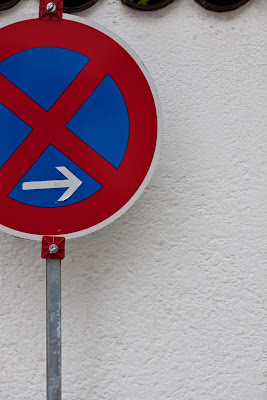The primary difficulty in photographing in our kitchen is that in Germany the kitchen has a low priority for space in a home and as a result is a quite confined space. I tried to work around this by shooting through the front window as well as from inside the kitchen. I could have opted for a relatively wide angle lens, 24 or 50mm, but wanted to stick to medium to long telephoto's to both fill the frame and preserve the proportions of the face.
My first two shots were through the kitchen window with long telephoto's
200mm, f/4, 1/250, ISO 800
300mm, f/4, 1/180, ISO 200
Both images demonstrate the concentration needed when using a sharp knife. The colours are well saturated and the shadows are not too pronounced as the lighting through the window was not direct sunlight, but diffuse light reflected from nearby buildings.
Moving indoors I had to shift to shorter focal lengths, either 85mm or 135mm. The 135mm enabled me to fill the frame with Heidi's face:
135mm, f/2, 1/90, ISO 800
135mm, f/4, 1/30, ISO 800
Both images are quite soft, partly due to the fact that the low light forced me to use a lower shutter speed than I was comfortable with and a very large aperture. I could have boosted the ISO beyond 800, but I find the noise becomes very noticeable at 1600 or 3200. However, I like the softness and the slight halo'ing caused by the back lighting. Again there is no eye contact, but in each case the facial expression is gentle but concentrated.
Moving to the shorter focal lengths, I was able to include a little more of the background and produce more of an environmental portrait that illustrates what Heidi is doing.
105mm, f/4, 1/30, ISO 800

85mm, f/2, 1/90, ISO 800
In each of these images the back lighting adds an ethereal quality and although the image is no longer dominated by Heidi, I like the out of focus background - it is just clear enough to strongly suggest that this is a kitchen and that Heidi is cooking. None of the previous images really made that clear.
Finally as it got a little later and the light dropped, we turned on some lights in the kitchen. This changed the lighting dynamic adding a warm glow to the images.
85mm, f/2, 1/60, ISO 800

The profile shot is the first that actually contains Heidi's eye and this is the problem with this sequence. Cooking is a very concentrated activity and leaves limited opportunity to really engage with the subject. Combined with the lack of physical space this left me unsatisfied with this sequence.
The sequence of images that I prepared for Anke did not give me the opportunity to frame a head and shoulders shot, but did provide much better opportunities for interaction and better eye contact. In this case I was shooting indoors and used a pair of 400J monoblock flash guns in soft boxes to provide the light. I was also working with more space, but trying to create a variety of images in a fixed time. As a result all of the following images are made with my 24-105mm f/4 zoom. I set the shutter speed at 1/125s as this would sync with the flash and provide sharp images. In the previous sequence I selected a very wide aperture, partly driven by the available light, but also by the desire for a soft look with background out of focus. In this case my job was to illustrate a physiotherapist working in a medical environment, thus both Anke and her patient needed to be in focus. I went for a safe f/8 and adjusted the light intensity to deliver a correct exposure.
95mm, f/8, 1/125, ISO 100
92mm, f/8, 1/125, ISO 100

96mm, f/8, 1/125, ISO 100
85mm, f/8, 1/125, ISO 100
In this sequence the final image has the best facial expression, concentrated but relaxed, with a very clear eye line to the patient. The next two images are slightly different, in both the portrait could be said to be the patient rather than the physiotherapist, however, it is the interaction between the two that makes the images interesting
47mm, f/8, 1/125, ISO 100
40mm, f/8, 1/125, ISO 100
In both shoots, the primary challenge was to find an angle from which I could capture expression and some action. The second sequence worked better in this respect, but aesthetically I much prefer the soft focus, back lit images in the first sequence. The first sequence was purely for art, the second was essentially a gig, although one for which I required no payment.








































